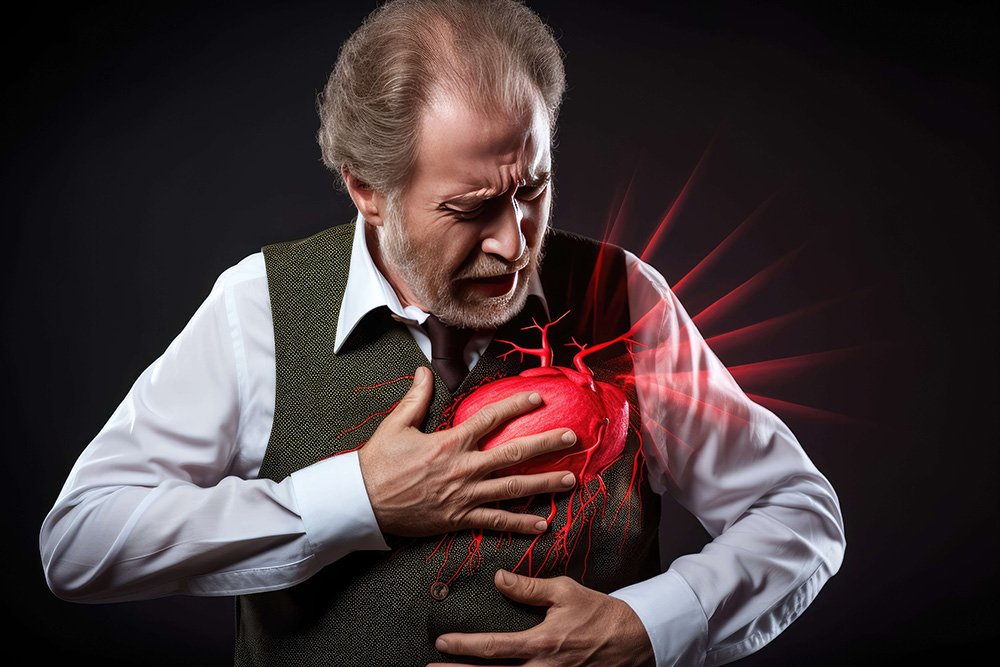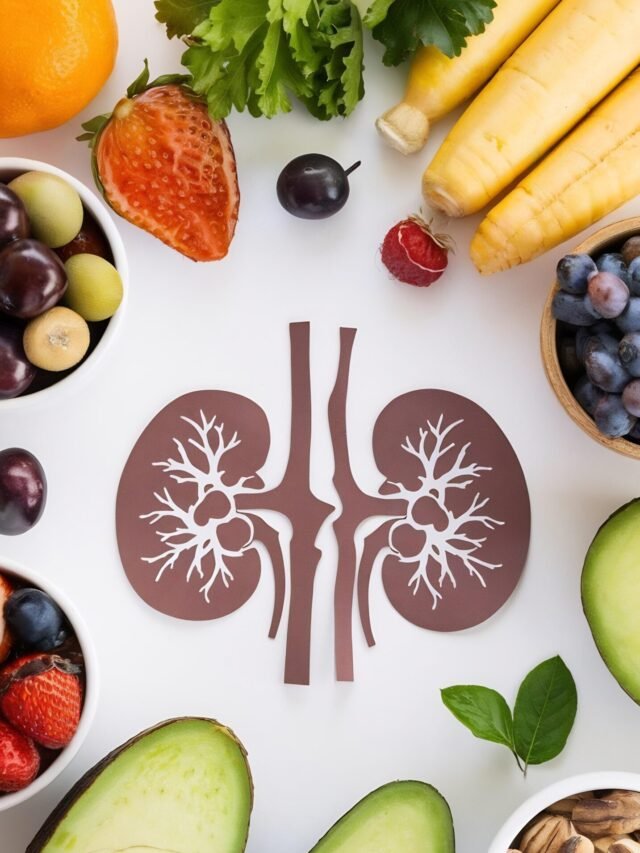Health
Heart Attack vs Cardiac Arrest: Key Differences Explained
 When it comes to medical emergencies involving the heart, heart attack and cardiac arrest are terms often used interchangeably. However, these two conditions are very different — both in how they occur and how they should be treated. Understanding the distinction between a heart attack and cardiac arrest can save lives.
When it comes to medical emergencies involving the heart, heart attack and cardiac arrest are terms often used interchangeably. However, these two conditions are very different — both in how they occur and how they should be treated. Understanding the distinction between a heart attack and cardiac arrest can save lives.
This article explores their differences, symptoms, causes, treatments, and how to respond when someone is experiencing either event. We reference credible sources like WebMD, Healthline, MSN, and OnlyMyHealth, along with insights from cardiologists featured in media platforms such as India Today, Hindustan Times, TOI, and News18, ensuring this content reflects both expertise and trustworthiness in line with Google EEAT principles.
What is a Heart Attack?
A heart attack, medically known as myocardial infarction, occurs when blood flow to a part of the heart is blocked, usually by a clot. This deprives heart muscles of oxygen, causing damage to the heart tissue.
Causes of a Heart Attack:
- Coronary artery disease (CAD)
- Buildup of plaque (atherosclerosis)
- Spasm in a coronary artery
- Rarely, sudden tear in the artery (dissection)
According to Healthline, coronary artery disease is the leading cause of heart attacks, and lifestyle factors like smoking, poor diet, and stress increase the risk.
What is the JN.1 COVID-19 Variant? Symptoms, Tests, and How It’s Treated
What is Cardiac Arrest?
Unlike a heart attack, cardiac arrest happens when the heart suddenly stops beating due to an electrical malfunction. This leads to an immediate cessation of blood flow to vital organs.
Causes of Cardiac Arrest:
- Ventricular fibrillation
- Severe arrhythmias (irregular heartbeats)
- Heart attack (yes, a heart attack can trigger cardiac arrest)
- Cardiomyopathy
- Sudden trauma or shock
- Congenital heart defects
- Drowning or electric shock
The American Heart Association emphasizes that cardiac arrest is a leading cause of sudden death and requires immediate intervention.
Heart Attack vs. Cardiac Arrest: Key Differences
| Feature | Heart Attack | Cardiac Arrest |
|---|---|---|
| Definition | Blocked blood flow to the heart | Sudden stop in heart function |
| Cause | Circulatory issue | Electrical issue |
| Symptoms | Chest pain, sweating, nausea | Sudden collapse, no pulse, unresponsiveness |
| Consciousness | Usually conscious | Loses consciousness |
| Urgency | Medical emergency | Requires CPR + AED immediately |
| Can one lead to the other? | Yes | Yes |
In simpler terms: A heart attack is a “circulation problem,” while cardiac arrest is an “electrical problem.”
How Protein-Rich Foods Can Help You Lose Weight Faster
Symptoms to Watch Out For
🔴 Heart Attack Symptoms:
- Chest discomfort or tightness (lasting more than a few minutes)
- Pain radiating to the arm, back, jaw, or neck
- Shortness of breath
- Cold sweats
- Nausea or vomiting
- Lightheadedness
WebMD and MSN highlight that symptoms may vary by gender. For example, women are more likely to experience shortness of breath, fatigue, or pain in the jaw/back without chest pain.
⚡ Cardiac Arrest Symptoms:
- Sudden collapse
- No pulse or breathing
- Unresponsiveness
- May have prior symptoms like palpitations or chest pain
A person in cardiac arrest may show no warning signs — it happens suddenly and is fatal if not treated immediately.
Clear Your Arteries: 7 Natural Tips to Prevent Heart Blockages
Which Is More Dangerous: Heart Attack or Cardiac Arrest?
Both conditions are dangerous, but cardiac arrest is often more immediately life-threatening. It can cause death within minutes if not treated.
However, heart attacks are more common, and if untreated, can lead to heart failure or cardiac arrest. This is why early detection and management of heart attack symptoms are crucial.
According to India Today and News18, many deaths in India labeled as “heart attack deaths” are actually cardiac arrests due to lack of awareness and immediate care.
What to Do in an Emergency?
If You Suspect a Heart Attack:
- Call emergency services immediately.
- Have the person sit and rest.
- Give aspirin (unless contraindicated) to thin the blood.
- Keep the person calm until help arrives.
If You Witness a Cardiac Arrest:
- Call for emergency help.
- Start CPR immediately – push hard and fast in the center of the chest.
- Use an AED (Automated External Defibrillator) if available.
- Continue CPR until professional help arrives or the person shows signs of life.
OnlyMyHealth notes that every minute without CPR reduces the survival rate by 10%.
Can You Survive a Cardiac Arrest Without CPR?
Survival without CPR is extremely rare. According to the American Heart Association, immediate CPR can double or triple survival chances. Hence, it’s essential to educate yourself and others on CPR and AED usage.
9 Natural Drinks to Reduce Liver Fat in Just 2 Weeks
Prevention Tips for Heart Health
For Heart Attack:
- Quit smoking
- Eat a heart-healthy diet rich in vegetables, fruits, and whole grains
- Exercise regularly
- Control blood pressure, cholesterol, and blood sugar
- Manage stress
For Cardiac Arrest:
- Get regular heart screenings
- Treat underlying conditions (e.g., arrhythmias, heart disease)
- Discuss with your doctor if you need an Implantable Cardioverter Defibrillator (ICD)
- Avoid substance abuse
Hindustan Times and Live Mint have recently reported a rise in cardiac events among young adults due to sedentary lifestyle and stress, underlining the importance of preventive cardiology.
How Do Doctors Diagnose and Treat These Conditions?
Diagnosis of a Heart Attack:
- ECG (Electrocardiogram)
- Blood tests for cardiac enzymes
- Coronary angiography
Treatment:
- Medications (blood thinners, statins)
- Angioplasty or stenting
- Coronary artery bypass surgery (CABG)
Diagnosis of Cardiac Arrest:
- Observation of symptoms and vital signs
- ECG or imaging after revival
- Analysis of possible underlying heart conditions
Treatment:
- CPR and defibrillation
- Hospital-based advanced cardiac life support (ACLS)
- Long-term: ICD implantation or medications
TOI and News18 articles often feature stories of patients who survived sudden cardiac arrest due to quick CPR and timely hospital intervention.
Common Myths Debunked
❌ “Heart attack and cardiac arrest are the same.”
No – one involves blood flow, the other electrical failure.
❌ “Only old people get cardiac arrest.”
Cardiac arrest can happen to young people, especially athletes or those with hidden heart conditions.
❌ “If you’re fit, you’re not at risk.”
Even fit individuals with undiagnosed issues can suffer a heart emergency.
Takeaway: Know the Signs, Act Fast, Save Lives
Understanding the difference between a heart attack and cardiac arrest can help you recognize warning signs early, respond quickly, and even save a life. While both are emergencies, they differ in symptoms, causes, and treatments.
Heart attack = blocked blood flow
Cardiac arrest = electrical shutdown
Whether you’re a concerned individual, caregiver, or healthcare professional, staying informed and trained in CPR and AED usage can make all the difference.
-

 How to4 weeks ago
How to4 weeks agoHow to Check if Your Tax Consultant E-Verified Your Return Properly
-

 Health4 weeks ago
Health4 weeks agoWhat Happens When You Drink Black Coffee Every Day for 30 Days?
-

 Technology4 weeks ago
Technology4 weeks agoPerplexity AI Now on WhatsApp: Ask Questions, Get Summaries, Generate Images & More
-
![ChatGPT 5 Launched: Who Can Access It, How to Use It & Is It Free? [2025 Guide]](https://www.regularstation.com/wp-content/uploads/2025/08/2DAdWvVdE7ivGpRiqcLMfU-400x240.jpg)
![ChatGPT 5 Launched: Who Can Access It, How to Use It & Is It Free? [2025 Guide]](https://www.regularstation.com/wp-content/uploads/2025/08/2DAdWvVdE7ivGpRiqcLMfU-80x80.jpg) Technology3 weeks ago
Technology3 weeks agoChatGPT‑5 Launched: Who Can Access It, How to Use It, and Is It Free?
-

 Money4 weeks ago
Money4 weeks agoJSW Cement IPO Opens: GMP, Price, Subscription Status, Review & Should You Invest?
-

 Cryptocurrency4 weeks ago
Cryptocurrency4 weeks ago5 Cryptos That Could Challenge Solana (SOL) And Grow Your Portfolio 5000% In 2025
-

 Health4 weeks ago
Health4 weeks agoCoconut Water Isn’t for Everyone: 6 People Who Should Avoid It
-

 Health2 weeks ago
Health2 weeks ago5 Best Protein Sources for Vegetarians and Non-Vegetarians






